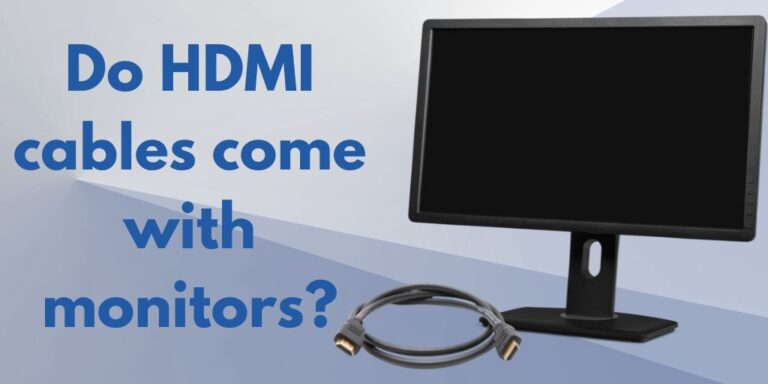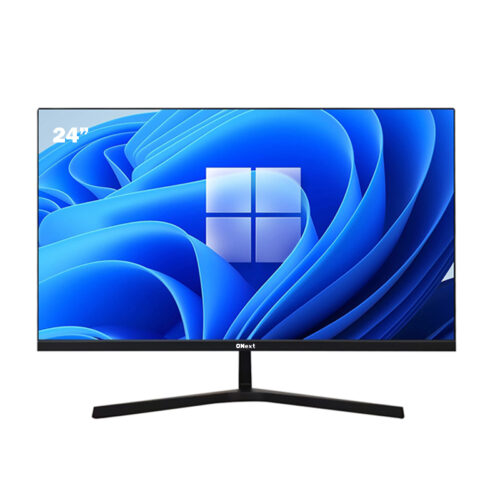Gaming monitors are an essential part of any serious gaming setup, yet one common question often leaves even experienced gamers second-guessing: “when you buy gaming monitors do they come with cbales?” It may seem straightforward, but the answer can impact your overall gaming experience. Whether you’re setting up your first rig or upgrading to a high-performance display, knowing which cables you need—and whether they’re included—is crucial. This guide covers everything from cable types to setting up your monitor for optimal performance.
What This Guide Covers:
- When you buy gaming monitors do they come with cbales?
- The most common types of cables and their functions
- Ensuring cable compatibility with your PC
- Step-by-step instructions for setting up your monitor
- Troubleshooting common issues
- The future of gaming monitor cables
When You Buy Gaming Monitors Do They Come With Cbales?
It depends. Most gaming monitors include at least one cable, typically an HDMI or DisplayPort. However, the type and number of cables vary based on the brand, price range, and target audience. Budget monitors usually come with basic cables, while high-end models might assume users prefer to buy premium cables separately.
To find out what’s included, check the product description or packaging. Manufacturers typically list all accessories, so you’ll know exactly what to expect. If the details are unclear, reaching out to the retailer or manufacturer for clarification is always a good idea.

The Most Common Types of Cables
Not all cables are the same, and choosing the right one can significantly affect your gaming performance. Here’s a breakdown of the most common options:
HDMI Cables
HDMI (High-Definition Multimedia Interface) cables are widely used in gaming setups. They carry both video and audio signals, making them convenient for most PCs and consoles. HDMI 2.0 and newer versions support 4K resolution at 60Hz, making them a solid choice for many gamers.
DisplayPort Cables
DisplayPort cables offer higher bandwidth than HDMI and are preferred for high-performance gaming. They support higher resolutions and refresh rates, making them ideal for 144Hz or 240Hz monitors. DisplayPort also enables multi-monitor setups, which is useful for gamers who use multiple screens.
DVI Cables
DVI (Digital Visual Interface) cables are less common in modern gaming monitors but still appear in some models. They support high-quality video but do not transmit audio. DVI is mostly found in older or budget-friendly monitors.
VGA Cables
VGA (Video Graphics Array) cables are outdated and rarely included with modern gaming monitors. They transmit analog signals and lack high-definition support, making them unsuitable for today’s gaming needs.
USB-C Cables
USB-C is becoming more common, particularly in newer gaming monitors. It offers high-speed data transfer and video transmission, making it a versatile option for streamlined setups.

Ensuring Cable Compatibility with Your PC
Even if your monitor comes with cables, they need to be compatible with your PC. Here’s what to check:
Port Types
Look at your PC and monitor’s ports. Most modern PCs feature HDMI and DisplayPort, but older models may only support DVI or VGA. If the ports don’t match, you’ll need an adapter or converter.
Resolution and Refresh Rate
Cables support different resolutions and refresh rates. HDMI 2.0, for example, supports 4K at 60Hz, while DisplayPort 1.4 can handle 4K at 120Hz. If you have a high-refresh-rate monitor, ensure your cable can keep up.
Cable Length
Consider the distance between your monitor and PC. A short cable may not be practical for larger setups, while overly long cables can cause signal degradation.
Adapters and Converters
If your monitor and PC have mismatched ports, adapters can help. For example, a DisplayPort-to-HDMI adapter allows you to connect a DisplayPort monitor to an HDMI-equipped PC.
Setting Up Your Gaming Monitor: A Step-by-Step Guide
Setting up a monitor correctly ensures the best performance. Follow these steps:
- Unbox Your Monitor Remove your monitor from its packaging and place it on your desk. Keep the included cables, manuals, and accessories handy.
- Connect the Cables Use the appropriate cable to connect your monitor to your PC. If multiple cables are included, choose the one that best suits your needs (e.g., DisplayPort for high refresh rates).
- Power On Your Monitor Plug the power cable into your monitor and connect it to an outlet. Press the power button to turn it on.
- Adjust Display Settings Open your PC’s display settings to set the correct resolution and refresh rate. This step ensures you get the best image quality.
- Test Your Setup Play a game or video to verify the display works correctly, ensuring smooth visuals and accurate colors.
Troubleshooting Common Issues
Even with a proper setup, issues can arise. Here’s how to address them:
No Signal Detected
- Ensure all cables are securely connected.
- Try using a different cable or port.
Poor Image Quality
- Check and adjust your resolution and refresh rate settings.
- Ensure you’re using a high-quality cable.
Flickering Screen
- Replace the cable to rule out damage.
- Adjust the refresh rate in display settings.
No Audio
- If using HDMI, check that your PC’s audio output is set to the monitor.
- Try a different HDMI cable or connect speakers directly to your PC.
The Future of Gaming Monitor Cables
Technology is evolving, and so are gaming monitor cables. Here’s what’s on the horizon:
USB-C as the New Standard
USB-C’s ability to handle video, power, and data transmission in one cable is making it a go-to option for future gaming monitors.
Wireless Display Technology
While still in development, wireless display solutions from Intel and AMD aim to eliminate cables altogether, paving the way for cleaner gaming setups.
Higher Resolutions and Refresh Rates
With gaming monitors pushing into 8K resolution and refresh rates beyond 240Hz, new cable standards will emerge to support these advancements.
Conclusion: Setting Up for Success
When purchasing a gaming monitor, it’s important to verify whether cables are included and ensure they’re compatible with your PC. Understanding different cable types, how to set up your monitor properly, and troubleshooting potential issues will help you get the best performance. Whether you’re a casual gamer or a competitive player, choosing the right cables and configuration is key to maximizing your gaming experience
